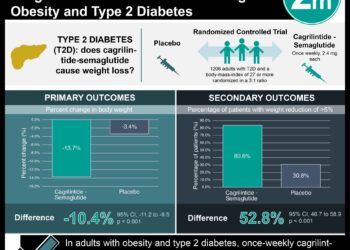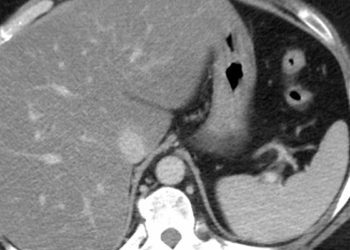Cycling is associated with reduced all-cause and cardiovascular disease mortality in individuals with diabetes
1. Time spent cycling was associated with lower all-cause and cardiovascular disease-specific mortality in this multicenter European cohort study of patients with diabetes, independent of other exercise.
2. Taking up cycling over a five-year period was associated with lower mortality rates compared with those who did not cycle at all.
Evidence Rating: 2 (Good)
Study Rundown: Diabetes is known to be a leading cause of morbidity and mortality worldwide. Many of the health conditions associated with diabetes are modifiable through lifestyle modifications and appropriate glycemic control. Exercise is a major component of preventive medicine and is particularly effective in reducing the incidence of cardiovascular disease. In this multicenter, prospective cohort study, Ried-Larsen et al sought to evaluate the association between cycling and mortality (both all-cause and cardiovascular disease [CVD]-specific) in patients with diabetes. Patient data was accrued through the pre-existing European Prospective Investigation into Cancer and Nutrition cohort; data from 7,459 individuals was included. The mean age of participants at the start of the study was 55.9 years (standard deviation [SD] 7.7 years) and the mean time since diabetes diagnosis was 7.7 (SD 8.1) years. The hazard ratios for both CVD and death were significantly lower amongst cyclists (individuals who spent any non-zero amount of time cycling). These trends persisted when controlling for smoking, self-reported diabetes diagnosis and sports participation. Finally, there was a dose-response relationship between time spent cycling and mortality risk which was modelled by a J-shaped curve. These results demonstrate that there is a clear health benefit to cycling for individuals with diabetes, and that generally the more time one spends cycling, the more pronounced this relationship is. There are several strengths to this study. The large sample size and lengthy follow-up help to validate the reported results. The authors’ conclusions are logical on the basis that exercise improves health, and they thoughtfully designed their study around evidence showing that patients with diabetes may prefer cycling to other forms of physical activity. A major weakness of this study is the reliability of some data, particularly with regard to variables that were self-reported. Diet and daily physical activity, for example, are key factors in this study which were patient-reported. The Mediterranean diet was considered a covariate in the analysis because it has been shown to protect against CVD, but this diet type was not defined. This aside however, Ried-Larsen et al’s study contributes to the growing body of evidence in favour of dietary and exercise interventions in improving quality and quantity of life for patients with chronic illness.
Click to read the study in JAMA Internal Medicine
Click to read an accompanying editorial in JAMA Internal Medicine
Relevant Reading: Physical Activity/Exercise and Diabetes: A Position Statement of the American Diabetes Association
In-Depth [prospective cohort study]: Patient data was derived from the EPIC cohort across 22 European centers. The exposure of interest (time spent cycling) was defined using an individual’s annual minutes of cycling averaged over 52 weeks, yielding the following categories of minutes per week: 0, 1-59, 60-149, 150-299, 300+. Stratified Cox proportional hazard models and hazard ratios (HR) with 95% confidence intervals (95CI) were used to analyze and report data. The model was adjusted to account for several covariates including life history and demographics (i.e., educational achievement, activity level outside cycling, diet, smoking) and CVD risk factors (i.e., previous myocardial infarction, hypertension, cancer, etc.). Several sensitivity analyses were also conducted to control for residual confounding, including age and sex; the reported results were robust throughout these analyses. The 10-year cumulative risk reduction for individuals who spent between 1-59 minutes cycling per week was -1.9% for all-cause mortality and -1.2% for CVD-specific mortality compared to those who did not cycle. HRs were calculated estimating that cycling expends an average of 7.5 metabolic equivalent of tasks (METs). Using this figure, the HR for all-cause mortality in diabetic patients who cycled 1-59 minutes per week was 0.76 (95CI 0.60-0.96) compared to those who did not cycle; the HR for CVD-mortality in this group was 0.72 (95CI 0.52-1.00). Interestingly, the regression curves plotting time spent cycling versus the HR for mortality demonstrated a J-shape with the lowest HR for mortality around 4-5 hours of cycling per week. The authors postulate that the slightly increased HR after this point may be due to an increase in fatal cycling injuries or even respiratory disease from cycling in densely-polluted areas. Despite this, the resounding conclusion from this study favours bicycling as an accessible and beneficial means of exercise for patients with diabetes.
Image: PD
©2020 2 Minute Medicine, Inc. All rights reserved. No works may be reproduced without expressed written consent from 2 Minute Medicine, Inc. Inquire about licensing here. No article should be construed as medical advice and is not intended as such by the authors or by 2 Minute Medicine, Inc.







